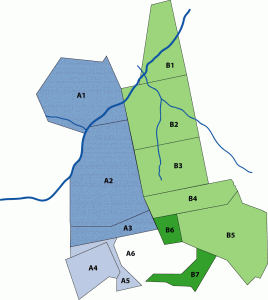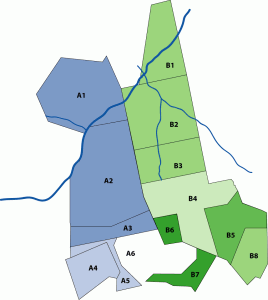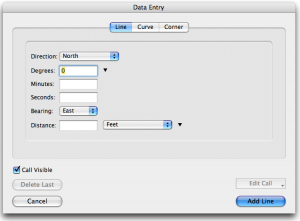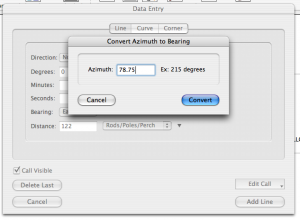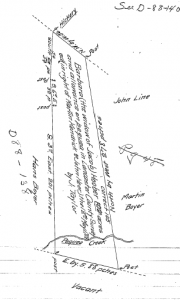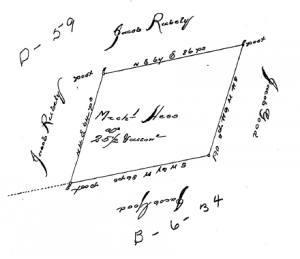How Many Henry Hoobers in Martic Township?
So, just how many Henry Hoobers were there in the Conestoga (now Pequea)/Martic (now Providence)/Lampter/Strasburg township area of Lancaster County, Pennsylvania? If you’d asked me that question yesterday, I’d have said one. Now today, I’m not so sure…
According to the township warrantee maps, there were 5 tracts either warranted to or patented to Henry Hoober in the area where Martic (now Providence), Lampeter and Leacock (now Strasburg) townships meet. [see B1-5 on diagram] They were:
- B1: 86 1/2 acres warranted to Henry Hoover 24 Jan 1733, patented to Joseph Bosler 28 Mar 1810, Patent Book H2:272
- B2: 144 acres warranted to Michael Shank, 27 Sep 1717, surveyed 4 Jun 1718, and patented to Henry Hoober 15 Apr 1740, Patent Book A9:180 (Copied Survey Book D82:15)
- B3: 106 acres warranted to Michael Shank, 27 Sep 1717, surveyed 4 Jun 1718, and patented to Henry Hoober 15 Apr 1740, Patent Book A10:97 (Copied Survey Book D82:48)
- B4: 68 acres warranted to Henry Hoober 14 Apr 1740, surveyed 10 Nov 1731, patented 15 Apr 1740, Patent Book A9:178 (Copied Survey Book C76:15)
- B5: 171 acres warranted to Henry Hoover 13 Nov 1744, surveyed 20 10ber (Dec?) 1744, Patent Book AA1:227 (Copied Survey Book A46:77)
In 1733, Michael Shank sold his rights to 250 acres at the junction of Pequea Creek and Big Beaver Creek to Henry Hoober and Jacob Good [tracts B2 & B3 in the diagram]. Henry Hoober took the northern portion and Jacob Good took the southern portion. Jacob Good’s last will & testament, dated 12 Sep 1739, named Henry Hoover as his son-in-law; his daughter was not named.1 There is also a last will & testament for Henry Huber of Martic Township, dated 7 Aug 1757.2 Jacob Huber, son of Hans Huber and owner of tracts A1-A3, named his “loving friend Henry Hoover” as one of the executors of his estate in his last will & testament, dated 9 Jul 1759.3
In 1758, John and Elizabeth (Hoover) Boyers sold their share of the property they had inherited via Henry Hoober’s last will & testament to John Hoover, the other heir to the property. This tract of land was patented in Patent Book A9:180—tract B2 in the diagrams.4
In 1767, Henry and Catharine Hoober sold to their son John Hoober two tracts of land in Martic Township.5 The first tract was 88 acres from the tract patented in A10:97 or B3 in the diagram. [see left] The second tract was 171 acres from the tract patented in AA1:227 or B5 in the diagram.
Also in 1767, Henry and Catharine Hoober sold to Jacob Hoober 3 tracts of land in Martic Township totaling 137 acres.6 Mapping it out, Jacob Huber’s property matches the residue of tract B3, B4 and part of B5 from Diagram I or B4 on Diagram II. These deeds, to the best of my knowledge, were not recorded until his executors—possibly his sons—sold the land in 1790.
Based on this information, it becomes apparent that there were two men named Henry Hoober—quite likely father and son—living in the Martic Township area circa 1740 at the time the tracts were patented. The elder Henry (?—1757) had children John, Elizabeth, and quite likely Henry Jr. He may have had more. Henry Jr. [the younger], who married a daughter of Jacob Good—quite possibly Catherine as seen in the deeds, had a son John and and possibly another named Jacob to whom he deeded land in 1767.
Henry Jr. may have also had a son-in-law named George Feite. His name appears in the metes and bounds for one of the tracts sold to John Hoober on the boundary for tract B5 (B8 on the diagram). Additionally, the name Ulrich Hoober appears as a neighbor (to the south) in the metes and bounds for tracts B4 and B5 sold to Jacob and John Hoober, respectively. He may have been another relative of Henry Jr.
Tract B6 and B7 also belonged to Hoovers. Tract B6 was warranted to Martin Huber 6 Apr 1803 and patented to him on 13 Nov 1811. Tract B7 was warranted to Jacob Huber 14 Mar 1796 and patented to him on 12 Apr 1803. These two men could have been grandsons of Henry Hoober Jr. or Jacob Huber. If at least part of B7 belonged to Ulrich Hoober at one point, he must not have patented it.

